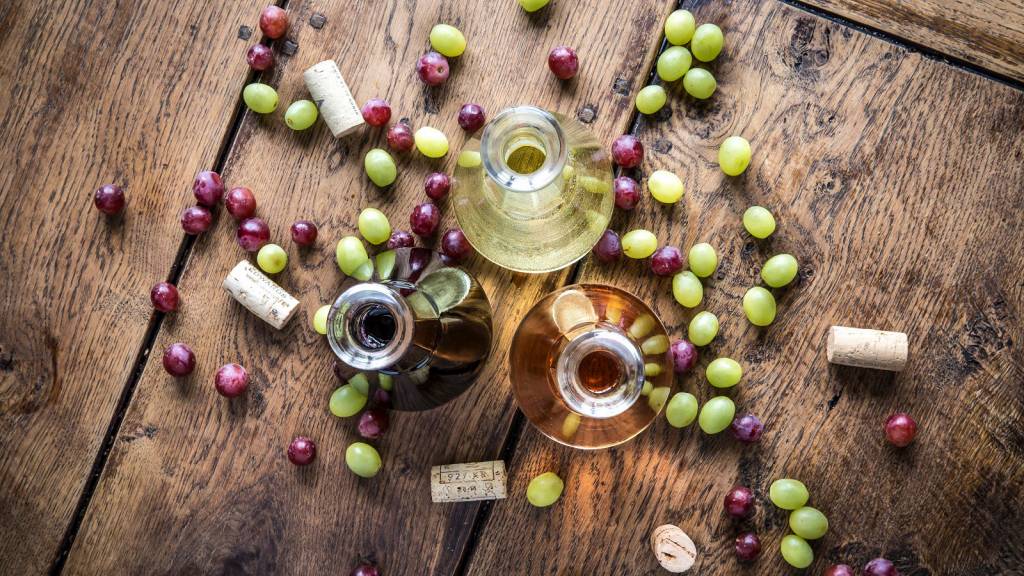Old World versus New World Wine
Friday 28 July 2017

Do you pour over a wine list looking for bargains from the New World or prefer to stick with the big guns of France and Italy? Time to try something different! We take a look at what you can expect from three popular wine varieties made in different parts of the globe.
Pinot Noir
Pinot Noir is the king of grape varieties. The wines made from it show great diversity, but the grapes need careful looking after. When perfectly made, it can be aged for many, many years.
As the name suggests, Pinot Noir is more black than red, but the skins are very thin, which is why wines made from it are lighter in colour and body than, say, Shiraz or Cabernet Sauvignon. It’s even used to make Champagne.

Pinot Noir likes a cool climate, so the best examples come from cool regions. The more sun, the more possibility of producing a wine that tastes cooked. Old World Pinot Noirs such as the esteemed red Burgundy are dry and fresh with good acidity. The aromas tend to be sophisticated – licorice, leather and wet leaves are just some of the typical descriptors; with aging the wine takes on more floral notes.
Pinot Noir is grown in Northern Italy too, where you can expect flavours reminiscent of tart berries, grass, potpourri and coffee. In the New World, these days, New Zealand Pinot Noir is similar to the European in style – light to medium weight, with wild strawberry aromas and pleasant acidity.
A Californian Pinot Noir, on the other hand, will be full-bodied, muscular, fruity and spicy – imagine dark cherries, white pepper and rose petals in one glass.
Rosé
The most iconic Old World rosé is from Provence. It’s pale, delicate, and light – almost watery – with a touch of strawberry flavours and blush strawberry colour.
New World rosés are quite different. They are more fruity, with more pronounced raspberry flavours and richer colours. A bolder colour tends to indicate stronger flavour, too.

South Africa produces some terrific rosé, often made from Merlot grapes. You’ll find it a little bit sweeter and fruitier than Old World rosé, but it’s still a dry wine.
Both Old and New World rosés are perfect for summer terrace drinking, however New World rosés tend to work better with food.
Choose Provençal rosé as an aperitif or for all-day drinking. It can be served with seafood and aubergine dishes, but nothing rich or smoky from the barbecue.
Chardonnay
If you’re one of the people who joked they wanted ABC (Anything But Chardonnay) ten years ago, it’s time to reconsider.
Gone are the days when New World Chardonnay was always heavily wooded and over-rich. Now that most New World winemaking regions have embraced the grape, styles vary widely even within a single country, making it hard to generalise.

Take California – where the hot climate of Calistoga in the Napa Valley results in Chardonnays tasting of tropical fruit and oak, yet the cool Carneros region (a short drive away) produces crisper, drier Chardonnays with green apple, melon and citrus notes.
It’s the same in Australia. Yarra and Hunter Valley Chardonnays tend to be medium-bodied, buttery and toasty wines, while Tasmanian varieties are lean and zesty – more like Old World Chablis from northwest Burgundy, which is also made from Chardonnay, but characteristically balances mineral and fruit flavours.
What about price?
It used to be the case that New World wines were reliably cheaper than Old World bottles, but as expertise has grown in countries such as the USA, New Zealand and Australia, their finest wines have also begun to attract premium prices.
Meanwhile, lesser-known regions of the Old World, such as Puglia in Italy and the French Cote de Gascogne, have been able to maintain keen prices.
If you love good wines at great prices, join us for Wine Wednesdays at London House, the Gordon Ramsay restaurant in Battersea, York & Albany in Camden, or maze Grills in Chelsea.
That’s where we serve bottles at retail prices all day Wednesday, from noon till 11pm, so you can enjoy a drink from as little as £11 per bottle. What better excuse to have fun exploring all the different regions on offer!
 Gordon Ramsay Restaurants
Gordon Ramsay Restaurants